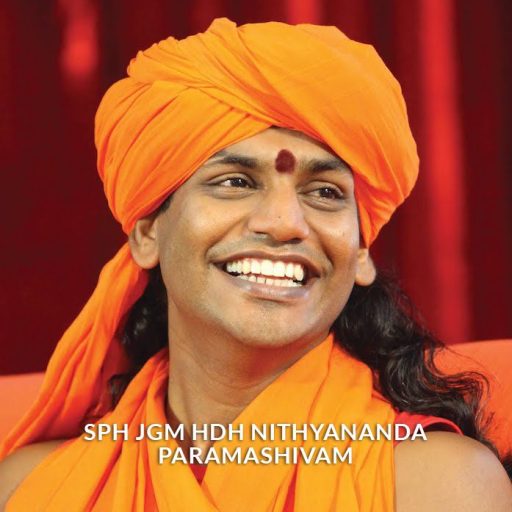Kṛṣṇa when slapped with shock by Arjuna, this is the right description I will give, Kṛṣṇa wakes up! The first thing that comes out from Kṛṣṇa is Sāṅkhya yogaḥ. In Sāṅkhya, you are recognized as a soul. The idea taught to you about you is – you cannot be cut by weapons, you cannot be burnt by fire, you cannot be made wet by water, and you cannot be blown away by air. Nothing can do ‘nothing’ to you. Nothing can be done to you by anything.
Understand, the moment Bhagavān is opening His mouth, you are given an amazing introduction about you!
Kṛṣṇa is one of the greatest followers of Kapila, the celebrated Incarnation of Mahādeva and Vishnu in Śrimad Bhāgavatam. Kapila is the first thinking man on the planet who experienced completion, the founding father of this great Sāṇkhya philosophy, the founder of Mahānirvaṇi Pīṭha. That is why even when Bhagavān addresses His own glory later, when He introduces Himself, He says, ‘siddhānāṁ kapilo muniḥ (10.26)—Among the great perfect beings, the complete beings, I am Kapila.’ ‘I am Kapila among the siddhas, the great incarnations!’
Siddha means a complete being. This means that in Śrī Kṛṣṇa’s time, Kapila was the star of the spiritual world. That is why He remembers Kapila. That is why I say that Bhagavān Śrī Kṛṣṇa is also the Mahāmandaleśwar (spiritual head) of Mahānirvaṇi Pīṭha. Śrī Kṛṣṇa also studied Sāṅkhya; He is a follower of Sāṅkhya philosophy.
Kṛṣṇa directly addresses some of Arjuna’s earlier doubts in these verses. Arjuna has claimed that destroying his people, svajanam will bring him untold grief, not only in this world but in future births as well. Kṛṣṇa explains to Arjuna that all his fears are misplaced. There is no death in reality. What is seen as death is the destruction of the impermanent body. No one therefore can kill another person or be killed by another person. Both are illusions. The spirit that occupies the body lives on forever. It occupies the body temporarily, but by itself the Self is eternal, indestructible, and has no births and deaths. It is the body, the sheath that covers it, that dies and is reborn. The spirit or the Self lives on forever.
What Kṛṣṇa says here is radically different from what any other scripture has said. Kṛṣṇa denies the concept of death here. He says there is no such thing as death. He is not saying: be good, and you will be taken care of when you die and if you are bad, you will suffer. He says there is no death, that’s all.
Here Kṛṣṇa is talking to someone who has witnessed death. So, He has to explain to him that death does not exist. It is the individual’s attachment to the body that creates the illusion that the individual also perishes with the body. Attachment to the body is the most intense of all attachments. We also get attached to material possessions as well as our relationships. The potential loss of these leads to fears similar to that of losing one’s body. One who understands that all these attachments are temporary and are the cause of all our suffering, understands the truth. Understanding this truth removes all fears.
In some cultures, people are bred on the pattern that one’s life ends at death. This pattern leads to desperate inadequate cognition, as if there is no further time to seek happiness. Once a person understands that death, like birth, is merely a passage, and sees the continuity of being, the fear of losing one’s identity disappears along with fears of sin and hell.
This is why religions that accept the continuance of life after death, as Hinduism and Buddhism do breed a culture of tolerance amongst their followers. There is no rush to live and extract the maximum juice out of one’s life in a single birth. They propound that we all come from a common energy source and we go back to this source, and the cycle continues. Those who understand this spiritual truth teach completion, inclusion and compassion, and they have no desire to convert others to their beliefs.
It is easy to misinterpret these verses and propose that if there is no one really killing or being killed, then what stops us from mindless killing? Listen. That is not what Kṛṣṇa intends. One who truly understands that death is not the end of the path, but only a milestone in the journey, is not perturbed by death when it happens naturally or when it is caused for a purpose.
Here Kṛṣṇa reveals to him a more subtle level of truth that he hasn’t yet grasped. Arjuna shies away from killing, not because of his conviction of ahimsā, non-violence, but because of his root thought pattern that he identifies with the people he has to destroy. His hesitation is from his delusory incompletions, ignorance, attachment and fantasy, not from the wisdom of non-violent compassion.
Kṛṣṇa’s message to Arjuna is as it would be to someone who has to uphold dharma at all costs. However, it would not be a blind acceptance of orders, it would not be a powerless action driven by fear and greed. It would not be killing for gain and or killing out of fear that one would be killed. It would be an ultimate powerful action from the space of completion; born out of the knowledge that such destruction is needed for universal good and that such destruction would lead to creation.
You may ask, ‘If nothing is destroyed and nothing can be destroyed, is there no sin in killing at all? So Kṛṣṇa is indifferent to mass violence? No, He is not. For one thing, Kṛṣṇa speaks as an enlightened Master from an existentialist perspective and declares that, even when the body perishes, the spirit lives on, and therefore, there is no death.

